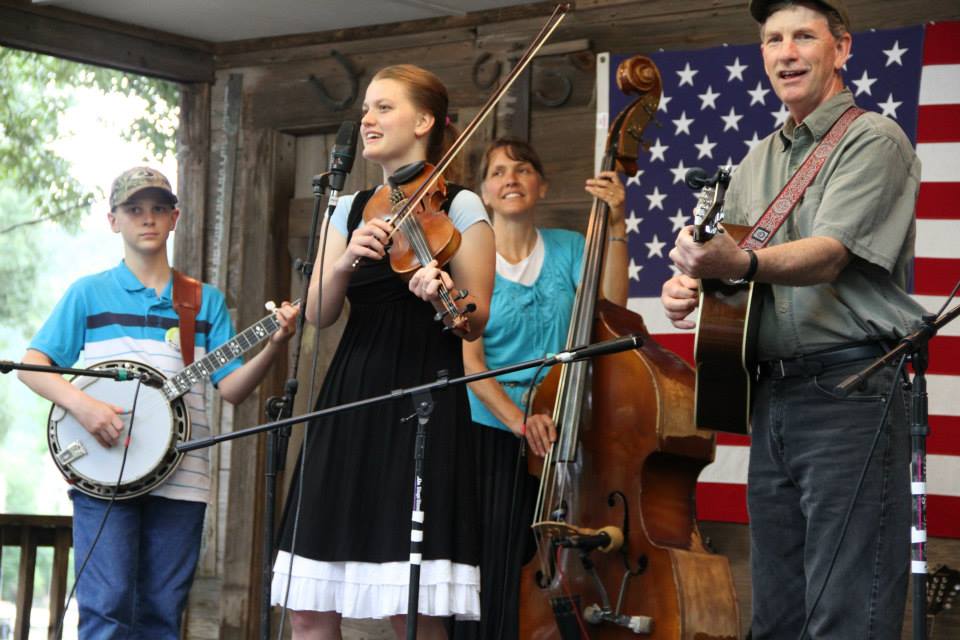
hartleyfamily.uk
- The HARTLEY Surname Hall of Fame 2 G-L
Other notable bearers of the HARTLEY surname include:
HARTLEY Family - go to Blog Bluegrass
The
Hartley Family started learning to play bluegrass and gospel music in 2003,
just wanting to do something together as a family. A year later, to their surprise,
they started getting invitations to play at churches, festivals, and other events.
By 2007 they were traveling to places as far away as upstate New York, sharing
their songs and meeting many kind people. Wherever they went, their goals were
to (1) Honour God, (2) Bring joy to people, and (3) encourage others.
In 2012, Anna, Josiah, and Daniel moved away from home and were too busy to
make it to shows, leaving their dad, mom and the two youngest kids-Abby and
Micah. It was a change that was hard to get used to. After deciding that their
band was done, they kept getting some calls to come play, so the four left started
practicing again. After doing a year of local shows, they are back to traveling
and doing music full time.
Although the band has changed a lot from what it was for 8 years, their goals
remain the same. Tom(banjo/guitar/vocals), Deb(bass/vocals), Abby(vocals/guitar/mandolin/fiddle),
Micah(banjo/fiddle/mandolin/vocals).
Hal HARTLEY [b.3 November 1959, Lindenhurst, Long Island, New York, USA]
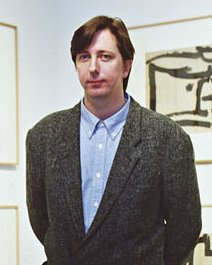 American film director, writer, and pioneer of the independent film movement,
who was educated at the State University of New York at Purchase. [see Hal's
Website and Fame3.htm]
American film director, writer, and pioneer of the independent film movement,
who was educated at the State University of New York at Purchase. [see Hal's
Website and Fame3.htm]
HARTLEY Hare from "Pipkins" TV 1973-1981
video of HARTLEY Hare, in action.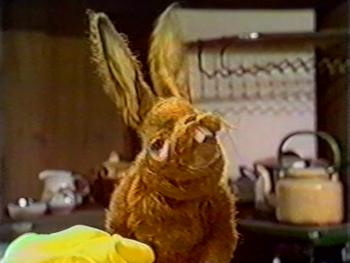
Hartley was operated and voiced by Nigel Plaiskitt, and he remained the hand behind the hare throughout the run of the show.
The HARTLEY Mob [USA] one of the "Gangs of New York"
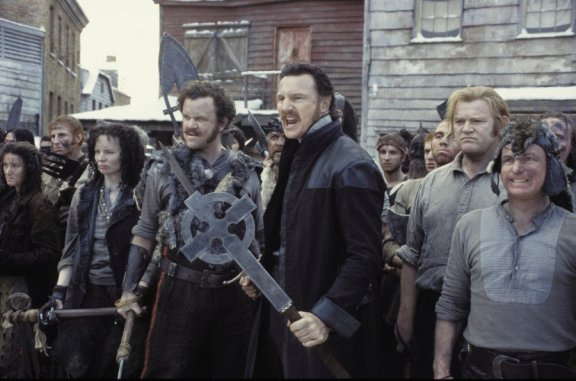 [clip from "Gangs Of New York" 1992]
[clip from "Gangs Of New York" 1992]
In the period between 1880 and 1920, five major gangs controlled the underbelly of Manhattan. In Lower Manhattan was the Hartley Mob of Houston and Broadway, formed in the 1870's. They would ride around in hearses, their weapons concealed in the black drapery.
Brigadier-General Sir Harold Brewer HARTLEY KCVO GCVO CBE MC FRS CH [1878-1972] Chemical Engineer.
Harold Brewer HARTLEY was born in London on 3rd September 1878, the only son
of Harold Thomas HARTLEY [b.1851] a Mineral Water Manufacturer, and his wife,
Kate [b.1854]. He graduated from Balliol College, Oxford in 1900 with first-class
honours in Natural Science [Chemistry and Mineralogy]. In 1906 Harold married
Gertrude, eldest daughter of A. L. SMITH, later Master of Balliol; they had
a son [Air Marshall Sir Christopher Harold HARTLEY b.31st January 1913, Oxford;
m.Margaret WATSON 1944; d.29th July 1998, Oxford], and a daughter.
1881 Census:
Harold HARTLEY Head M Male 30 St George Hanover Square, Middlesex, England [Mineral
Water Mftg Employing 25 Men]
Kate HARTLEY Wife M Female 27 Kensington, Middlesex, England
Harold B. HARTLEY Son Male 2 St Georgs, Middlesex, England
Kezia E. AYMOTT Servant U Female 21 Uxbridge, Middlesex, England General Domestic
Servant Grace ELLIOT Servant U Female 18 Marylebone, Middlesex, England Nurse
Source Information: Dwelling: 50 Gloucester Street Census Place London, Middlesex,
England Public Records Office Reference RG11 Piece / Folio 0106 / 56 Page Number
1
During WW1 Harold served initially in the 7th Leicestershire regiment [1914-1915],
but as part of the attempt to counter German gas attacks was appointed as Adviser
[Chemical Warfare] to the 3rd Army [1915-1917]. In 1917, newly promoted to Lieutenant-Colonel
he was made Assistant Director Gas Services, and at the end of the war, was
promoted to Brigadier-General and Controller of the Chemical Warfare Department
at the Ministry of Munitions [1918-1919]. Harold received the Military Cross
and was mentioned in despatches three times. He returned to academic life after
the war and was knighted in 1928. Harold lived at Boss Lane, Hughenden, near
High Wycombe, Buckinghamshire was a friend of Winston Churchill. He died on
9th September 1972. There is a Silver Medal issued to outstanding scientists
known as the 'Hartley Silver Medal'.
WW1: The Hague Declaration of 1899 and the Hague Convention of 1907 forbade
the use of "poison or poisonous weapons" in warfare. The French were the first
to use chemical weapons during WW1 [tear gas, August 1914] but tear gas was
not seen by them as a "poisonous weapon".
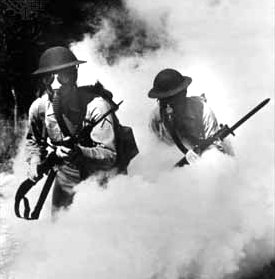 More than 190,000 tons of chemical weapons
were produced by the end of WW1 including chlorine, phosgene and mustard gas.
Official figures declare about 85,000-100,000 deaths and 1.25 million non-fatal
casualties directly caused by chemical warfare agents during the course of the
war. The skin of victims of mustard gas blistered, their eyes became very sore
and they began to vomit. Mustard gas caused internal and external bleeding and
attacked the bronchial tubes, stripping off the mucous membrane. This was extremely
painful and most soldiers had to be strapped to their beds. It usually took
a person four or five weeks to die after a fatal mustard gas exposure. Many
of those who survived a gas attack were scarred for life, with respiratory disease,
blindness and failing eye sight common post-war afflictions.
More than 190,000 tons of chemical weapons
were produced by the end of WW1 including chlorine, phosgene and mustard gas.
Official figures declare about 85,000-100,000 deaths and 1.25 million non-fatal
casualties directly caused by chemical warfare agents during the course of the
war. The skin of victims of mustard gas blistered, their eyes became very sore
and they began to vomit. Mustard gas caused internal and external bleeding and
attacked the bronchial tubes, stripping off the mucous membrane. This was extremely
painful and most soldiers had to be strapped to their beds. It usually took
a person four or five weeks to die after a fatal mustard gas exposure. Many
of those who survived a gas attack were scarred for life, with respiratory disease,
blindness and failing eye sight common post-war afflictions.
In the 1920s, generals reported that poison gases had never won a battle. The
soldiers said they hated it and hated the gas masks. Only the chemists spoke
out to say it was a good weapon.
One notable poison gas casualty of WW1 was Adolf HITLER, Gefreiter 16th Bavarian
Reserve Regiment, who was temporarily blinded in October 1918. As a result,
later as Führer und Reichskanzler, Adolf HITLER adamantly refused to authorise
the use of poison gas on the battlefield during WW2.
WW2: In August 1943, USA President Roosevelt approved the shipment of chemical
munitions containing mustard agent. On the night of December 2nd, 1943, German
Ju 88 bombers attacked the port of Bari in Southern Italy, sinking several American
ships, among them SS John Harvey, which was carrying mustard gas intended for
use by the Allies against German troops. 628 Allied military victims were hospitalized
with mustard gas symptoms, and by the end of the month, 83 of them had died.
The number of civilian casualties was thought to have been even greater. Later
on in WW2 the USA did consider using gas to support their planned invasion of
Japan.
Henry HARTLEY [1815-1876] Hunter/Trader/Explorer - South Africa/Rhodesia.
Credit for opening up Rhodesia belongs not only to the missionaries but also to the early hunters and prospectors. One of the most famous of the hunters was Henry HARTLEY who as a child came out to South Africa with the 1820 Settlers. Henry was born in abt.September 1815 to Thomas and Sarah [nee FIELD] at Mansfield, Nottinghamshire. He was baptised on 3rd September 1815 at the Wesleyan Methodist, Mansfield.
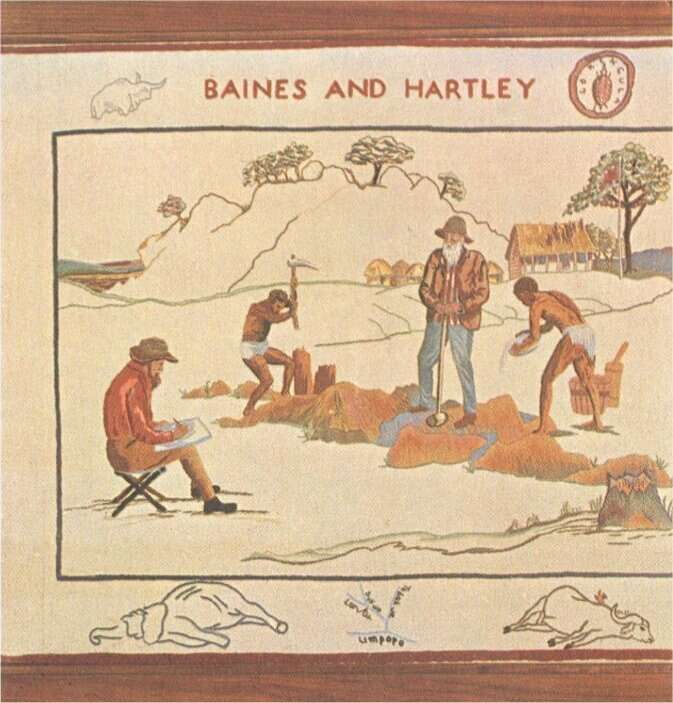 [pic showing Thomas Baines, seated, sketching Henry Hartley]
[pic showing Thomas Baines, seated, sketching Henry Hartley]
In 1841 Hartley moved to the Transvaal and went hunting in Matabeleland in 1859.
Thereafter he paid visits nearly every season to present-day Rhodesia. Henry
became a good friend of King Mzilikazi of The Ndebele. During 1865, while hunting
in Mashonaland, Hartley accidentally discovered gold. Soon afterwards, Hartley,
Adam Renders and the geologist Carl Mauch, while exploring north of Great Zimbabwe,
realized the extent of gold present around the old African mining villages along
the Mfuli and Tati Rivers. At Potchefstroom, in December 1867, Hartley and Mauch
announced the extent of gold present in Mashonaland, thus beginning the first
gold rush as prospectors and miners from Europe and Australia began the long
trek northward up the missionaries' road. The Transvaal Government did its utmost
to get hold of the Tati goldfields, but the ailing king, remembering old enmity
with the Boers, steadily refused to allow them a grant.
In 1869 Hartley was engaged by Thomas Baines, acting on behalf of the newly
formed South African Goldfields Exploration Company, to guide him to the Mashonaland
goldfields. Baines ranked only just below Livingstone, Stanley and Park in the
hierarchy of Victorian explorers in Africa. Baines must also be considered one
of the founders of modern Rhodesia.
Henry married three times and left abt.eight children. He died at his farm 'Thorndale' in the Transvaal on 8th February 1876
Henry
Robinson HARTLEY [1777-1850 ] Wine Merchant, Eccentric, Scholar, Naturalist
Founder of the University of Southampton [see Hartley Hall of Fame 4 - The
Hartley Institute]
Henry
was born 12th November 1777 and baptised at Holy Rood Church, Southampton. His
parents were Henry HARTLEY of Southampton [1731-1800] and Susanna LAVENDER of
Wimborne [1742-1821].
Henry's 17thC ancestors had lived at Roughlee and Lower Craggs near Padiham,
Lancashire [John HARTLEY 1690-1739 and Ellen ROBINSON 1693-1755] and Roughlee
and Admergill near Brogden, Yorkshire [see below]** [John HARTLEY 1640-1691
[m.Ellen Hartley] and his son William HARTLEY of Colne 1667-1730 [m.Grace STEPHENSON
of Lawnd] ]. John of 1640 may have been the son of William HARTLEY or Christopher
and Ellen HARTLEY, both of Colne.
Henry married Celia CROWCHER in 1798 but divorced her in 1802. Celia had a daughter,
Sarah Ann, whose father was probably Francis FRANCIS of Portsmouth, whom Celia
later married. Henry never married again, but did pay Celia £100 per year
for the rest of his/her life.
Henry's widowed mother died in 1821, leaving most of her estate to Henry, including;
Hartley Farm at Winsor near Southampton; three houses numbered 65-67 High Street,
Southampton [having been inherited from Ellen ROBINSON's brother, George ROBINSON
of Southampton1700-1776, Henry's great uncle, and George's wife Sarah ROBINSON
[Susanna LAVENDER's aunt] who died in 1783 [George also had property at Crags
Croft, Padiham, Lancashire]; and some fields in Orchard Lane, Southampton. At
that time Henry possessed an inherited fortune of £30,000, later to exceed
£100,000, after his death in 1850. The contents of the three houses, furniture,
telescopes, clothing, books, and manuscripts, were eventually left in his Will
to the City of Southampton, his fortune to be used to set up and fund an Institute,
a Museum, Public Library, Botanical Gardens and Observatory. Henry wanted to
promote Natural History *, Astronomy, Antiquities, and Classical and Oriental
Literature. Income from Hartley Farm would provide for his servants and his
ex-wife Celia. Since the courts couldn't prove one way or the other whether
Henry Robinson HARTLEY had or had not been the father of Sarah Ann [FRANCIS],
she eventually inherited £17,500. The City of Southampton received over
£40,000, hence, it enabled 'The Hartley Institute' to be founded, eventually
becoming Southampton University. [Almost £50,000 went to the Government
in death duties]
Henry's eccentric life was preoccupied with his personal interests and studies
and his poor health [caused by a sexual disease he is thought to have caught
from his unfaithful wife, Celia]. He lived most of his life in Southampton,
but left his house in the High Street unoccupied for many years, moving to Calais,
France [where he died], Belgium, and Newington, London. His income came from
his inheritences and investments and he had nothing to do with the day-to-day
running of the Hartley [and Robinson] Wine Merchant businesses.
* Marginella Hartleyana - a small sea snail [1828]
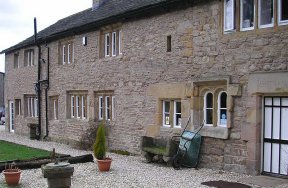 ** Admergill Hall Farm, a working farm at Lower Admergill next to Admergill
Hall; the house is a Pennine longhouse built in 1611 with all original oak beams,
Inglenook fireplace and mullion windows.; one of the boundaries of the parish
towards Barnoldswick; is also called Ald, Mere-gill, the Gill, or Gully, which
formed the old boundary. Admergill Hall Farm is located North of Blacko on the
A682 heading towards Gisburn. Travelling approximately 1.5 miles North from
Blacko, Admergill Hall Farm located down a left hand turn following a sharp
bend to the right in the road. There is also a late 18thC farm nearby at Higher
Admergill. Further north along the main road is Admergill Pasture Farm.
** Admergill Hall Farm, a working farm at Lower Admergill next to Admergill
Hall; the house is a Pennine longhouse built in 1611 with all original oak beams,
Inglenook fireplace and mullion windows.; one of the boundaries of the parish
towards Barnoldswick; is also called Ald, Mere-gill, the Gill, or Gully, which
formed the old boundary. Admergill Hall Farm is located North of Blacko on the
A682 heading towards Gisburn. Travelling approximately 1.5 miles North from
Blacko, Admergill Hall Farm located down a left hand turn following a sharp
bend to the right in the road. There is also a late 18thC farm nearby at Higher
Admergill. Further north along the main road is Admergill Pasture Farm.
The name Admergill is said to have meaning "King Arthur's water". In the 12thC
Admergill was farmed by the Monks and was a half way house on the Packhorse
route between Bolton Abbey and Sawley Abbey.
1524 Richard Tattersall plaintiff against John Hartley of Admergill for ocupying
several parcels of land in Barrowford. Jury says that the plaintiff shall have
a way leading out of a close called Witley (Wheatley) for 2 years to come without
interruption.
1524 Richard Tattersall plaintiff aginst John Hartley of Admergill in a plea
of trespass for the occupation of certain parcel of land lying in Wittawbothe
(Whitehough) against Robert Lee (I think this Le was R.Lee, Knight, Commissioner
of the Royal Forest in 1507). Plaintiff wins 10s damages.
1524 Richard Tattersall plaintiff aginst John Hartley of Admergill in a plea
of trespass for the occupation of certain parcel of land lying in Wittawbothe
(Whitehough) against Robert Lee. Plaintiff wins 10s damages.
1527 The jury declare that a messuage and other buildings at 22s 2.5d pa rent
in Roughlee reverted to the King upon the death of Henry Hartley and that John
Hartley is his son and heir and 16 years of age or more and that Lawrence Hargreaves
is his uncle to the said John and agrees to be his guardian until he attains
maturity. Margery Hartley (widow of Henry) forbade fine for her dower and Henry
Mitton forbade fine until the said John Hartley should fulfil the intention
of the said will of his father.
1531 John Hartley, alias Goosecombe, sues John Robinson jnr of Black Moss for
debt.
1531 Miles Nutter (father-in-law of 'witch' Alice Nutter) sues John Hartley,
William Mitton for debt.
1539 James Hartley of Fulshaw served on a jury.
1540 Robert Hartley was named Pynus. Richard Hartley was called Little Hodge.
John Hartley was called Hoydye.
1540 John Hartley and Bernard Hartley complain against Robert Blakey in a plea
of trespass for open fences between Juddefield and the Long Rodes upon a dyke
called “Le Blacke Dyke”. Jury award damages.
1555 Henry Bannester of Parkhill and James Hartley of Blacko fined 12d each
for keeping an unruly tenant in John Robinson alias Bewse who with his dogs
drove away his neighbour's beasts.
1557 William Lister of York allowed Richard Aicroyde of Briercliffe (this would
be Foulds House) to use land in Colne rented by John Hartley. Richard Aicroyde
then purchased the land but had to allow John Hartley the use of it for the
term of his life.
1558 Richard Bancroft, Greave of Pendle Forest, surrenders 1 messuage in Fence
at 10s to John Hartley of Admergill, Richard Hartley of Langroyde,
1561
John Hartley of Admergill surrenders a parcel in and upon Blacko at 4s 8d
1561 John Hartley of Admergill surrenders one parcel of land in and upon Blacko
at 4s 8d to the use of Hugh Wilkinson, Jenett his wife and Elizabeth his daughter,
and survivor, to the use of the following shall pay the Queen's rent and 14s
to John Hartley, his heirs and assigns and 1 day of shearing, 1 day of turves
drawing and 1 day of hay making.
1562 John and Richard Hartley are appointed "Fence-lookers" in Roughlee.
1583 Interrogatorie: James Robinson stated 80 states that in 1523 the tenants
of Barrowford exchanged lands with tenants of Blacko. Lawrence Hartley of Barrowford
exchanged with James Hartley of Blacko and that Blacko in Barrowford joins another
parcel called Blacko in Admergill and that a ditch divides the said grounds.
Also the deposition of John Hartley, aged 76, of Cotes in Craven is taken. He
states that his own father, Bernard Hartley was one of the first to take vaccarries
from the King's Commissioners by Court Roll (this would be in1507).
1600 Elizabeth fillia John Nutter de Admergill bap 16th April 1600 John was
the son of Alice Nutter of Roughlee (witch trials of 1612). Anna Fil Jacobi
Hartley de Admergill “ 20th Sept 1602 Bernard - 1600 Margreta - 1606 Johes -
1608 Jacobus - 1610 Robt - 1613 Hugo - 1619 Johanis Fil Gulielmi (William) Hartley
“
1608 John Hartley pays £1:9:6 for rent of Admergill
1618 William Hartley of Admergill pays rent to the Duke of Albermarle of 6s
6d in 1618 and 5s 10d in 1662.
1632 Surrender: John Robinson of Oldlawnd, Elizabeth his wife & Ellen Hartley
late of Admergill, E. & E. being heirs of John Hartley of Admergill, decd, at
the request of John Robinson of Goldshay son & Heir of Margaret his mother
1640 Gulielmus [William] - 1645 Anna - 1647 Jacob - 1649 Jane “ “ 1642 Ann Hartley
F William “ 1677 Eliz. - 1662 Ellen - 1654 - 1657 George - 1655 Jane - 1667
Margaret - 1660
1642 James Hartley of Admergill in the county of York by his will dated 1642
left that estate to his son William Hartley, who’s son and heir, John HARTLEY
1662 William Hartley of Admergill is mentioned in a land surrender
John Hartley of Roughlee Old Hall & Admergill:
1662 John Hartley pays 15s:9d for his property in Roughlee [probably the Hall].
1663 John Hartley of Admergill married Ellen Hartley of Roughlee Hall in 1663
Ellen was the daughter of James Hartley of Roughlee Hall who inherited Dimpenley
estate and moved there. James was son of Margaret Smith, of Roughlee Hall and
Hugh Hartley, yeoman of Winewall. Margaret’s father, John Smith is thought to
have built Roughlee Hall in the later 16thc, he married Alice Shawe, daughter
of Henry Shawe of Newsome, later of Blacko and Alkincoates. Alice was widowed
in 1669 and later married a Slater.
Colne Baptisms: Ellin Hartley F John bap 1664 Jane - 1679 William - of Roughlee
and Admergill bap 1667 William Fil Ja: Hartley - 1616 - 1631 Ellena - 1693 Lower
Admirgill:
1699 John Hartley of Admergill appears to have died in 1699 having had issue.
Alexander, William, John, James, George, Anne and Margaret. The eldest son Alexander
succeeded his father and had a son, John Hartley, who sold the Admergill estate
to his uncle John Hartley in 1726. John Hartley of Newchurch in Pendle and Higher
White Lee in Pendle Forest (an estate which was acquired by purchase about the
close of the 17th or the beginning of the last century) was the third son of
John Hartley of Admergill who died in 1699. He had issue two sons, John and
George and four daughters, Jane married to Mr John Manknowles, Elizabeth married
to the Revd. Mr Nabbs of Newchurch in Pendle, Mrs Cronkshaw and Mary Married
to Mr Bernard Hartley of the Hague near Colne.
1725 Debtor's Insolvency Papers relating to Roger Hartley, woollen weaver and
Richard Towneley, husbandman, both of Blacko
1797 Alexander Hartley, younger surviving son of Bernard Hartley who died in
1797, married Maria Crook and had issue a son, Mr John Hartley, printer, Colne
who now possesses the estates of Lower White Lee and Admergill; and three daughters,
Alice, wife of Mr Law, surgeon of Padiham. Sarah, wife of Mr Henry Johnson of
Rochdale and Jane, wife of Mr Doyle of Colne, surgeon. Mr Alexander Hartley
died June 1839 and was buried June 20th aged 56 years.
1802: here were lately found 117 pennies of Edward 1st and John Baliol, King
of Scotland.
1816: John Hartley of Admergill, in the liberty of Admergill & Brogden, farmer,
buys a plot of land 344sq yards, part of The Doles belonging to Watermeetings
Farm (this would be the roadside land in the area behind the present Post Office).
Lower Admergill with Brogden: From the deeds of the Colne Estate of Thomas Shaw:
Sale in 1896: Farm House – Barn – Shippon – Stable – Yard – Garden – Croft 3a
Or 38p Cow Heys 3a 2r 5p Mill Meadow (site of watermill below dwellings) 5a
2r 37p Middle Meadow 5a 1r 31p Far Meadow 7a 2r 34p Football Ing (Site of playing
fields, below mill on moor side of beck) 6a 12r 8p Higher Heys (Heys = fence)
9a 1r 2p Lower Heys 4a 3r 31p Wood Heys Oa 1r 28p Plantation 1a 2r 16p Hole
Meadow 3a 0r 2p Further Marles 10a Or 34p Money Gates Pasture (next to Toll
House, Blacko Bar) 2a 2r 15p Money Gates Meadow 2a 2r 7p High Gates Meadow 6a
Or 7p Part of Banks Pasture 6a Or 7p Part of Banks Pasture + 7 acre piece 14a
Or 26p Holme Oa 2r 24p Blacko Hill 11a Or 20p Total: 103 acres 3rods 8perches
The property auction was held by Mr. Waddilove at £120.00. This is most likely
Thomas Waddilove who jointly occupied numbers 16 and 18 Gisburn Road Blacko
– in 1896, 1899, 1902 and 1905 William Thompson, Grocer and Postmaster, was
the other party. In 1937 William Henry Walton, the Landlord of the Sun Inn,
lived at number 16. In 1908 these houses were listed as empty. The house and
buildings have recently (1896) been entirely rebuilt at considerable cost and
upon the most modern principles. The estate map accompanying the sale does not
include what is now called Admergill Hall - this belonged to the Trustees of
Ms. Weldon. Colne Wills: Admergill: James Hartley 1801 Worsted Manufacturer
John “ 1623 Margaret “ 1632
1881 Census: Lower Admirgill, Brogden With Admirgill, Yorkshire John HARTLEY
Head M Male 38 Admirgill, York Farmer Of 200 Acres Emp 1 Man Eliza SMITH Serv
U Female 19 Patelybridge, York Domestic Servant George PICKUP Serv U Male 19
New Church, Lancashire Farm Servant
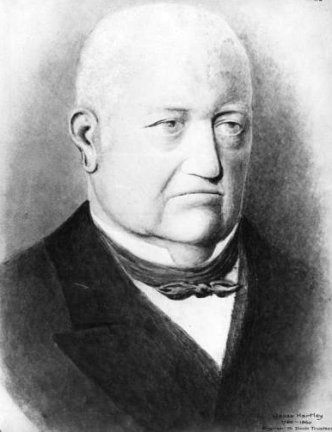
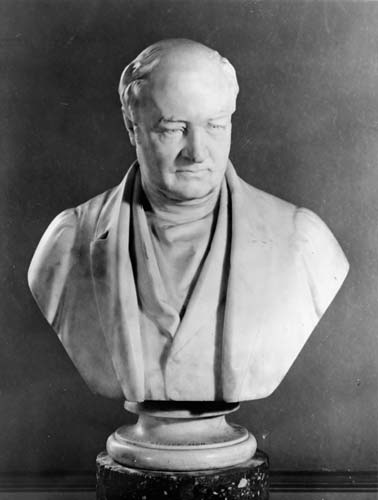 Jesse HARTLEY had worked for his father, Bernard HARTLEY, a Stonemason, Architect
and Bridgemaster for John Carr and the Duke of Devonshire. At the time Jesse
designed and built the Albert Dock and its warehouses he was Surveyor to the
Liverpool Dock Trustees and by far the highest-paid salaried engineer in the
country. In the 36 years he spent working for the Liverpool Dock Trustees, Hartley
either built or altered every dock in the city. The quality of his work and
its longevity suggests that it was more than just a job to him - they are a
testament to his dedication and attention to detail.
Jesse HARTLEY had worked for his father, Bernard HARTLEY, a Stonemason, Architect
and Bridgemaster for John Carr and the Duke of Devonshire. At the time Jesse
designed and built the Albert Dock and its warehouses he was Surveyor to the
Liverpool Dock Trustees and by far the highest-paid salaried engineer in the
country. In the 36 years he spent working for the Liverpool Dock Trustees, Hartley
either built or altered every dock in the city. The quality of his work and
its longevity suggests that it was more than just a job to him - they are a
testament to his dedication and attention to detail.
 The Victoria Tower, built by Hartley in 1848 at the entrance to Salisbury Dock
The Victoria Tower, built by Hartley in 1848 at the entrance to Salisbury Dock
His position gave Hartley the opportunity to deal with each dock as part of
a whole system, rather than simply as a stand-alone basin. He was acutely aware
of the importance of good communication between docks, through railways, canals
and roads, as well as ease and safety of access for ships. Hartley was certainly
thorough, and liked to supervise every stage of design and execution.
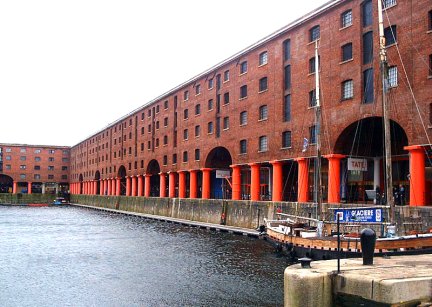 While planning the Albert Dock and its warehouses, possibly his most famous
creation, Hartley built models of the warehouses to test the brick arches. While
not a particularly novel designer Hartley nevertheless created a number of new
uses for iron including crane arches on the walls of the warehouses. He also
mocked up a large-scale model to observe how a layer of iron beneath a wooden
floor helped it resist fire. Hartley's stressed-skin roof structure was the
first of its kind and a dazzling piece of innovation. It consisted of wrought
iron plates, riveted together to produce a light but sturdy structure that was
less of a target for thieves, and in the event of a fire was less likely to
cause damage to passers-by. It was also an expensive development, only adopted
for the extra security it afforded the building. Hartley's designs were both
practical and economically sensible, showing a pragmatic and prudent nature.
Not all of Hartley's designs are as sombre and purely functional as the Albert
Dock: the hydraulic accumulator tower at Canada Dock looks more like a castle
than a dock structure.
While planning the Albert Dock and its warehouses, possibly his most famous
creation, Hartley built models of the warehouses to test the brick arches. While
not a particularly novel designer Hartley nevertheless created a number of new
uses for iron including crane arches on the walls of the warehouses. He also
mocked up a large-scale model to observe how a layer of iron beneath a wooden
floor helped it resist fire. Hartley's stressed-skin roof structure was the
first of its kind and a dazzling piece of innovation. It consisted of wrought
iron plates, riveted together to produce a light but sturdy structure that was
less of a target for thieves, and in the event of a fire was less likely to
cause damage to passers-by. It was also an expensive development, only adopted
for the extra security it afforded the building. Hartley's designs were both
practical and economically sensible, showing a pragmatic and prudent nature.
Not all of Hartley's designs are as sombre and purely functional as the Albert
Dock: the hydraulic accumulator tower at Canada Dock looks more like a castle
than a dock structure.
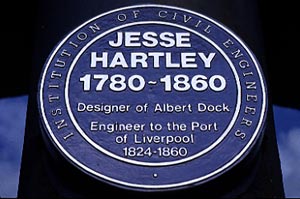
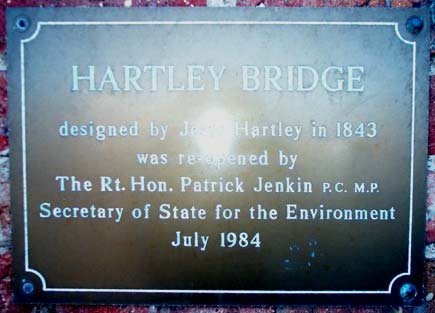 At the far end of Albert Dock is a plaque in his honour, placed by the Institution
of Civil Engineers.
At the far end of Albert Dock is a plaque in his honour, placed by the Institution
of Civil Engineers.
John HARTLEY [1839-1915] was an English Poet who worked in the Yorkshire dialect. He wrote a great deal of prose and poetry – often of a sentimental nature – dealing with the poverty of the district. He was born in Halifax, West Yorkshire. Hartly wrote and edited the Original Illuminated Clock Almanack from 1866 to his death. Most of Hartley's works are written in dialect. Hartley wrote a number of books about the character "Sammywell Grimes" who has a number of adventures and suffers unfortunate mishaps.
Jonathan Scott HARTLEY [September 23, 1845 - 1912] 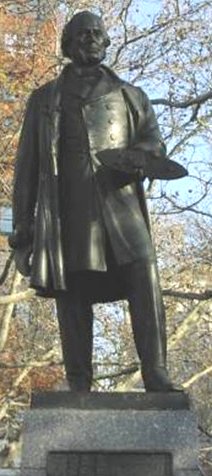 American Sculptor
American Sculptor
Jonathan was b.1845 in Albany, New York. He was educated at the Albany Academy
and began his professional life as a worker in marble. Subsequently he went
to England, where he passed three years, entered the Royal Academy, and gained
a silver medal in 1869. After residing for a year in Germany, he returned to
the United States, and after another visit to Europe, when he went to Paris
and Rome, he became a resident of New York. He is one of the original members
of the Salmagundi sketch club, and was professor of anatomy in the schools of
the Art students' league in 1878-'84, and president of the league in 1879-'80.
His works include "The Young Samaritan," "King Rene's Daughter" (1872); "The
Whirlwind" (1878); a statue of Miles Morgan, erected at Springfield, Massachusetts,
in 1882, and bas-reliefs on the monument at Saratoga that commemorates the defeat
of Burgoyne.
J
R HARTLEY 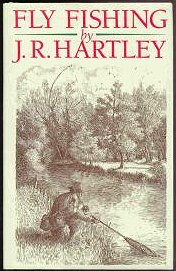 [author of "Fly Fishing" by J R Hartley]
[author of "Fly Fishing" by J R Hartley]
 _ _ the iconic Yellow Pages TV Ad.
_ _ the iconic Yellow Pages TV Ad.
Keef HARTLEY [8 April 1944-26 November 2011 Preston, England] English Musician, Drummer and the name of his Band.
RIP Keef: Preston drummer who played at Woodstock dies aged 67
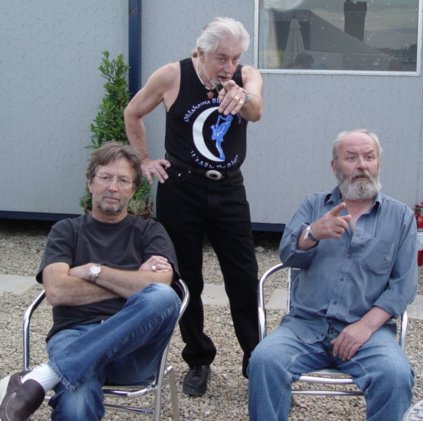 Keef HARTLEY [seated right] with Eric CLAPTON [seated left] and John MAYALL
[standing]
Keef HARTLEY [seated right] with Eric CLAPTON [seated left] and John MAYALL
[standing]
Keef HARTLEY was born on 8th April, 1944, at Preston, Lancashire, England.
The Keef HARTLEY Band of the late 1960s forged jazz and rock music sympathetically
to appeal to the UK progressive music scene. Drummer HARTLEY had already seen
vast experience in live performances as Ringo Starr's replacement in Rory Storm
And The Hurricanes.
Keef played at the Woodstock Festival. He played with John Mayall's Bluesbreakers,
also with Chicken Shack ...
for more on Keef go to: A
Brief History of Keef HARTLEY
"The history of rock and roll has produced innumerable drummers.
A small number of them have become household names, Ringo Starr, Ginger Baker,
Charlie Watts, John Bonham. How many though, have been talented and forceful
enough to carve out a successful solo career, without the advantage of being
in the public eye, via involvement with a big selling group? The answer must
be, very few indeed. This article centres on one such drummer and band leader,
Keef Hartley. His recorded legacy spans the era's of Merseybeat, R&B, The British
blues boom, and prog rock,leaving a host of highly collectable records in his
wake. Additionally, he's contributed his considerable talent to genres as diverse
as folk, Jazz, Kraut-rock and one of the biggest selling albums of the 1970's.
To find the start of Keef's career, we must go back to his home town of Preston
in Lancashire and the year 1962. At this time Keef was playing with a highly
regarded local outfit, "The Thunderbeats". Whilst this name will be unfamiliar
to most readers, it is worth a brief mention if only for the fact, that this
group would be the starting point for other collectable artists of the next
decade. Examples of these include David John and The Mood, Little Free Rock
and Thundermother (who were to perform on one side of the extremely rare "Astral
Navigations" L.P. released by Holyground in 1971). The Thunderbeats were to
perform regularly around the NorthWest, even supporting The Beatles at Morecambe,
however Keef was about to make his first move ..."
L[eslie] P[oles] HARTLEY CBE [30th December 1895 - 13th December 1972] English Novelist.
L.P.Hartley was born at Whittlesey, Cambridgeshire. Leslie's mother was Mary
Elizabeth [Bessie] [née THOMPSON]. His father, Harry Bark HARTLEY, was a solicitor
in Peterborough.
L.P. Hartley was given the name Leslie after Virginia Woolf's father, Sir Leslie
Stephen. He had two sisters, Enid Vary, who was three years older, and Annie
Norah HARTLEY [*see below] who was eight years younger.
In 1908 the family was able to move in to 'Fletton Tower', a few minutes from
the centre of Peterborough, and which was styled as a miniature castle protected
by a high wall and trees. Leslie and Enid Hartley were first taught at home
by a teacher who came after he had finished his day's work at a local school.
Enid Hartley was then sent to St Felix School at Southwold.
In the autumn of 1908 Leslie Hartley became a boarder at Northdown Hill preparatory
school in Cliftonville, Thanet. In August 1909 he was invited by one of the
other boys, Moxey, to stay with his family at Bradenham Hall which they had
rented from the Rider Haggards, near Swaffham in Norfolk. It seems plausible
that this inspired elements in The Go-Between, with Bradenham Hall becoming
Brandham Hall, and Moxey becoming Maudsley.
In April 1910 Leslie Hartley became a boarder at Clifton College, a public school
on the edge of Bristol. He was then sent to Harrow School. He ended up as head
of the school.
In December 1914 he won an exhibition to Balliol College, Oxford, and he arrived
there in October 1915 to study Modern History. However, with the start of the
First World War the future at Oxford was uncertain and he wondered for some
time whether he should enlist in the Army. In the spring of 1916 he made his
decision and left Balliol College.
In April 1916 he enlisted as a gunner and went to Cooden Camp, Bexley and then
he was transferred to an infantry regiment at Catterick Bridge in north Yorkshire,
where he took on the job of the camp's postman. He was then sent to an officers'
training corps at Sidney Sussex College, Cambridge, where he was made into a
Second Lieutenant. He was invalided out of the army in September 1918.
After a year of further recuperation he returned to Oxford in October 1919.
He became a member of the Brackenbury Society and also of the Pagan Society.
When he was President of the Pagans he had the task of introducing and thanking
Siegfried Sassoon who gave an address to the Society.
In March 1920 he was made a co-editor of the Oxford Outlook along with Gerald
Howard and A. B. B. Valentine, and he began to commission work from authors
such as Charles Morgan, L. A. G. Strong, Edmund Blunden, Louis Golding, John
Strachey, and C. M. Bowra. His own work began to appear in the publication,
including The Cat, Night Fears, A Portrait, A Summons, A Condition of Release,
and The Duke's Tragedy. Between the wars he lived in Venice. Then he lived alone,
apart from servants, in London, Salisbury, and near Bath. His trilogy The Shrimp
and the Anemone, (1944), The Sixth Heaven, (1946), and Eustace and Hilda, (1947),
is a study of the intense relationship between a brother and sister from childhood
to maturity. It was awarded the James Tait Memorial Prize. His novel The Go-Between,
(1953), won the Heinemann Foundation Award. The novel was adapted for film in
1971, as was The Hireling in 1973. Leslie was awarded a CBE in 1956 and was
named a Companion of Literature in 1972.
*Annie Norah HARTLEY [1902 – 1994], usually known simply as Norah HARTLEY, was a writer and breeder of deerhound dogs and the first female board member of the Kennel Club. Annie Norah was born in Whittlesey, Cambridgeshire, studied at Cheltenham and Oxford University, graduating in literature with honours. She lived at the family home 'Fletton Towers' until her death in 1994. The 1840-built grade II listed house was sold in 1996.
please bookmark this website address: hartleyfamily.uk
e-mail enquiries to: william@hartleyfamily.uk